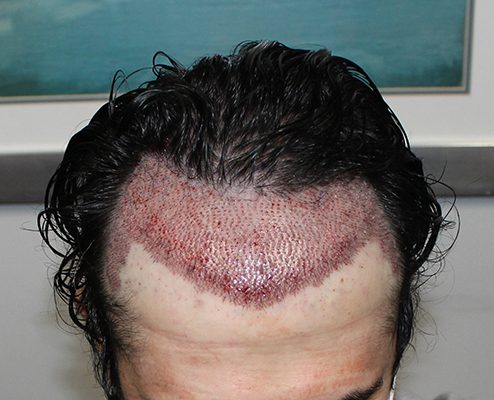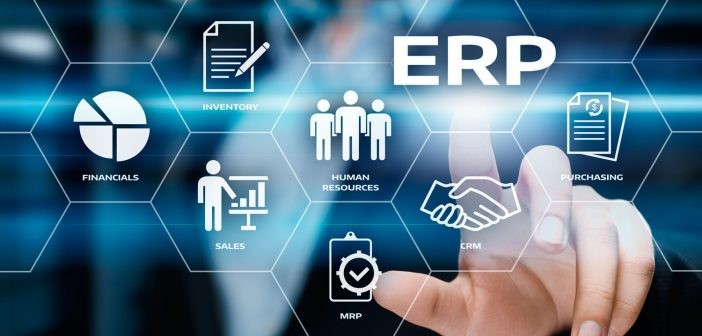Others
The Ultimate Guide to Hair Transplant Procedure – Everything You Need to Know

A hair transplant is a surgical procedure to regain fuller and thicker hair. It’s a popular option for people with hair loss and thinning hair.
When appropriately performed by skilled surgeons, hair transplants can look natural. it’sIt’s almost impossible for a layperson to tell the difference between your natural hair and the transplanted hair.
What is a Hair Transplant?
A hair transplant is a procedure used to treat thinning or balding hair by moving healthy hair follicles from one part of the scalp (known as the donor area) to the balding part. During surgery, your doctor uses one of two main techniques to obtain grafts: strip harvesting or follicular unit extraction.
In strip harvesting, your doctor removes a long, thin piece of scalp skin from the back of your head and separates it into tiny sections using stereo-microscopic dissection.
The grafts are then implanted into the balding area in their natural groupings to mimic the natural hair growth pattern. The resulting fuller head of hair looks natural.
How Does a Hair Transplant Work?
A hair transplant may be an option to restore hair growth. A surgeon removes hair follicles from an area of healthy hair (known as the ‘donor site’) and implants them in areas with thinning or balding.
The grafts are surgically implanted in the balding or thinning area of the scalp using special micro-punches. This is called an FUE procedure.
A hair transplant is a permanent solution to balding, as it relocates lifelong hairs resistant to the hair loss process from the back of the head to an area where you’re balding. This means your transplant can sometimes last a long time, up to 20 years or more.
How Long Does a Hair Transplant Take?
The time it takes for a hair transplant procedure to take place depends on the type of surgery you’re having. Most hair transplants use FUE (Follicular Unit Extraction), which involves extracting hair grafts from areas on your scalp that don’t have enough hair to cover a bald spot.
These grafts are then implanted into a bald area to restore hair. Many types of grafts are used in hair transplants, including punch grafts, mini-grafts, micro-grafts, and strip grafts.
These grafts are fragile and take time to secure themselves in their new location. This means it’s important not to hit or damage them in the first 10-14 days after a hair transplant.
What Are the Possible Side Effects of a Hair Transplant?
A hair transplant is a safe, effective treatment for thinning or hair loss. But it’s important to understand that some side effects can occur.
During a hair transplant, your doctor will remove follicles from a dense area of your scalp (the donor area) and implant them in the areas where you’re losing hair. They can use follicular unit transplantation (FUT) or follicular unit extraction (FUE).
The most common side effects include itching, swelling, and bruising. Itching is usually mild and will disappear in a few days, although scabs may form.
Does Insurance cover Hair Transplants?
One of the biggest concerns when deciding to undergo a hair transplant is whether Insurance covers it. Unfortunately, most insurance companies do not cover hair transplants for cosmetic reasons, so you will most likely have to pay out of pocket for the procedure.
However, if you can prove that the hair transplant is a medical necessity, your health insurance might reimburse you. You must submit a letter of medical condition from your doctor and provide all your medical records.
There are two main types of surgical hair transplants: follicular unit strip surgery (FUSS) and follicular unit extraction (FUE). The former involves removing a strip of skin from a non-balding area and placing it onto the balding areas.
Are Hair Transplants Safe?
A hair transplant is an invasive surgical procedure. Patients who choose to have the surgery should have realistic expectations and discuss their goals with a doctor.
In a hair transplant, the surgeon moves hairs from where hair grows (called a donor area) to areas where hair is thin or bald. During the procedure, you receive local anesthesia to numb the scalp.
The surgeon then places small pieces of scalp from the donor area into tiny slits in your balding scalp. These may be micro-grafts of one or two hairs, mini-grafts of a few hairs, or larger grafts that can be up to 40 hairs.
Are Hair Transplants Effective?
A hair transplant procedure is a very effective way to restore natural-looking hair growth after hair loss, especially for patients with mild to moderate baldness. But it takes patience and consistency to see results.
The first step to a successful hair transplant is choosing the right surgeon. They should be experienced and knowledgeable about the best techniques for achieving results.
Next, your doctor will clean the scalp and inject a local anesthetic to numb the area. Then, they will perform one of two transplant methods: Follicular Unit Strip Surgery (FUT) or Follicular Unit Extraction (FUE).
In FUT, the surgeon removes a 6- to 10-inch strip of skin from your back. This strip is then separated into grafts containing a single hair each.

Others
Cloud ERP Implementation: Balancing the CFO and CIO Perspectives
Others
Exploring the Art of Flat Lay Photography: A Comprehensive Guide for Aspiring Photographers
Others
Are There Any Restrictions on the Make or Model of Cars That Can Be Sold Online?
Selling a car online has become a common practice, offering convenience and a wide audience reach. However, there are very few restrictions on which make or model of used cars can be sold online these days. Here are a few guidelines:
Age
Older vehicles, especially those over a decade old, often face a drop in demand due to financing difficulties. Buyers looking to finance their purchase might find limited or no options for older models. This does not mean you cannot sell your older vehicle online; it simply suggests that the pool of potential buyers might be smaller. It’s a crucial point to consider for those pondering “how to sell my car online effectively.”
Title Status
Title status is paramount in the sale of a vehicle. A clear, lien-free title in your name is essential to facilitate a smooth transaction. If your title is lost, obtaining a replacement can be a hassle, with varying restrictions based on your location. This is especially pertinent for sellers in Huntsville, AL, looking to sell your car online without any legal hiccups.
Odometer Accuracy
Odometer accuracy is a legal requirement. Any issues like digital rollbacks or malfunctioning odometers must be disclosed. Failing to do so not only hinders the sales process but also raises legal concerns. Transparency about the vehicle’s condition is crucial for a trustworthy sale, particularly for those looking to “sell car online” effectively.
Emissions Standards
Emission standards are increasingly stringent, and older cars often struggle to meet these. In certain states, cars that fail to pass smog checks or inspections cannot be registered. This aspect is vital for sellers, as it impacts the eligibility of their vehicle for sale in specific markets, particularly when considering online sales platforms.
Safety Recalls
Addressing safety recalls before selling your car is not just ethical but often legally required. Selling a car with unresolved major recalls can lead to legal consequences and tarnish your reputation as a seller. It’s advisable to fix such issues to ensure a safe and compliant sale, especially when using online platforms to reach potential buyers.
Flood Damage
Flood-damaged vehicles are a significant concern. They often have hidden issues that make them unsafe and are typically flagged by lending institutions, making financing difficult. It’s generally advisable to avoid selling flood-damaged cars online, as it could lead to complicated legal and ethical issues, not to mention the potential risk to the buyer.
Gray Market Cars
Gray market cars, or vehicles imported from other countries that do not meet U.S. safety and emission standards, pose a unique challenge. These cars might be difficult or impossible to register in the U.S., thus significantly limiting your buyer pool. Understanding these nuances is crucial, particularly for sellers in international or diverse markets.
In conclusion, while there are few outright restrictions on the makes and models of cars that can be sold online, various factors like age, title status, odometer accuracy, emission standards, safety recalls, flood damage, and gray market issues can impact the sale process. Being aware of these guidelines and ensuring compliance can help you smoothly navigate the online car selling process, whether you’re in Huntsville, AL, or elsewhere.

 Others10 months ago
Others10 months agoDavid T Bolno: Why Giving Back To The Community Is So Crucial

 Travel10 months ago
Travel10 months agoPractical And Essential Car Interior Accessories To Add Comfort And Convenience To Your Drive

 Travel10 months ago
Travel10 months agoBusiness Visa for CANADA

 Business10 months ago
Business10 months agoTop Reasons Why you Need to Consider Outsourcing Real Estate Photo Editing

 Health10 months ago
Health10 months agoGarlic Is The Best Vegetable To Treat Heart Problems

 Business10 months ago
Business10 months agoDead And Co Setlist What They Played At The Gorge Amphitheatre

 Fashion10 months ago
Fashion10 months agoTips For Choosing The Right For Engagement Diamond Rings

 Tech10 months ago
Tech10 months agoThe Best Way to Never Get Lost: Buy Wayfinding Signs!

